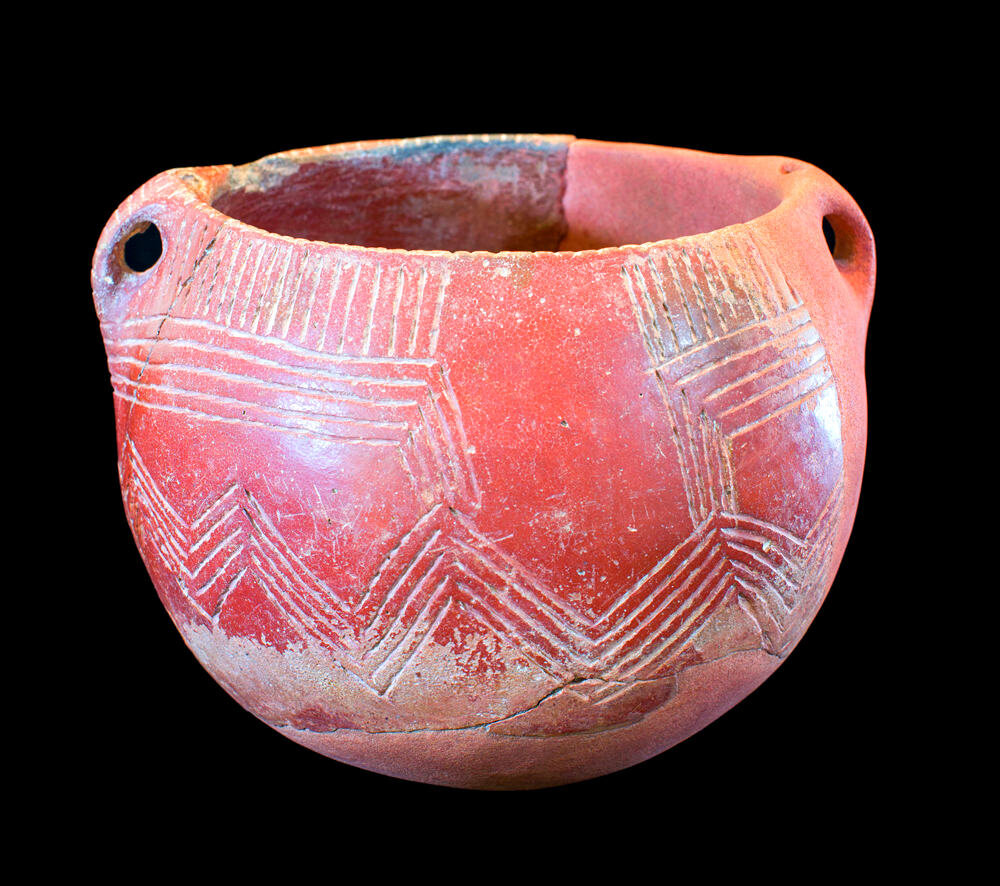The Alpujarra in prehistoric times
El Argar artist impression
Polopos and the Alpujarra in prehistoric times
The first written account of Polopos is from 1508. It is certain that the village existed before that time, but we can’t know for sure when the first settlement was established. We will discuss the history of the region and its people in earlier times and see what prehistoric life looked like for someone living around Polopos.
Hunting and gathering in the Paleolithic
The Paleolithicum is the oldest prehistoric period in human history. It starts roughly 2,5 million years ago with the use of stone tools.
The earliest known human presence in Iberia dates back to the Lower Paleolithic period, around 1.2 million years ago. These early inhabitants were likely Homo erectus, one of humanity's ancient ancestors, who migrated from Africa into the Iberian Peninsula.
Over the course of the Paleolithic, the region was populated by various Homo species, including Homo heidelbergensis and Neanderthals. Evidence of their presence has been found in archaeological sites across Spain, such as the famous Atapuerca archaeological site in Burgos.
In the Paleolithic period people lived as hunter-gatherers, collecting wild plants and pursuing wild animals. Prehistoric hunter-gatherers lived in groups that consisted of several families resulting in a size of a few dozen people. It remained the only mode of subsistence until the spread of the Neolithic Revolution.
The Neolithic Revolution in the south of Spain
Neolithic culture in Andalucia
La Almagra pottery - first agricultural inhabitants Andalucia
During the Neolithic Revolution man began to work the land and domesticate animals. The first settlements appeared and inventions such as irrigation, textile, ceramics, metallurgy, the wheel, sailing, followed in quick succession.
From the 6th millennium BCE onward the first agriculturalists arrive in Andalusia. It is uncertain where they came from, although North Africa is a serious candidate. They arrived with already developed crops - domesticated forms of cereals and legumes - and later domesticated animals like rabbits and pigs.
They consumed large amounts of olives, but it is uncertain whether they cultivated them or harvested them in the wild. These people are known as La Almagra (red ochre), named after the pots they made from the red earth found in this region.
In central Europe the practice of agriculture practically put an immediate end to the hunter-gatherer way of survival, but DNA research shows that in Spain the two lived side by side and intermingled for thousands of years.
The rough terrain and at that time dense forestation found east of Motril was not suited for agriculture at the time. The mountains around Polopos were covered with deciduous forests where hunting and gathering was prevalent and it is hard to find any archeological evidence of human presence.
Group grave in the cave of Murcielagos near Albunol
Group grave in the cave of Murcielagos near Albunol, 4000 BCE. ‘Queen’ and servants, wearing animal skins, sandals made from grass and baskets with remains of poppy seeds.
However there are some interesting archeological sites in the vicinity of Polopos. For example near Albunol where a golden necklace was one of the archeological findings in the cave of Murcielagos. There are caves near Gualchos: las Cuevas de Campanas and Motril: la Cueva del Capitan, where evidence of occupation has been found.
The Bronze Age
Near the town of Antas, in the province of Almeria, El Argar was the capital of a civilization that has been described as the first state in Europe, because of its class-type state society with enormous social differences. Between 2200 and 1500 BC they developed metallurgy like no one had ever done before, and in their expansion policy they came to control a territory the size of Belgium.
Paleolithic and Neolithic archeological sites
Artist impression of El Argar.
Polopos lies within their sphere of influence, but again, there is no proof of human presence except on the coast near Castell de Ferro and again in the caves near Albunol.
Colonization
The late bronze age saw most civilizations around the mediterranean collapse. Out of the wreckage came the Phoenicians, who would come to colonize many areas along the mediterranean with their knowledge of ship building and navigation. The Phoenicians reached the Andalucian coast around the ninth or eighth century BCE and colonized it. Closest to Polopos were the colonies of Almunecar and Salobrena.
Fenician colonies around the Mediterranean
The Phoenicians best known legacy is the world’s oldest known alphabet. We therefore end the prehistoric period (the time before written records) and the first part of this history of Polopos and the Alpujarra with the coming of the Phoenicians.






